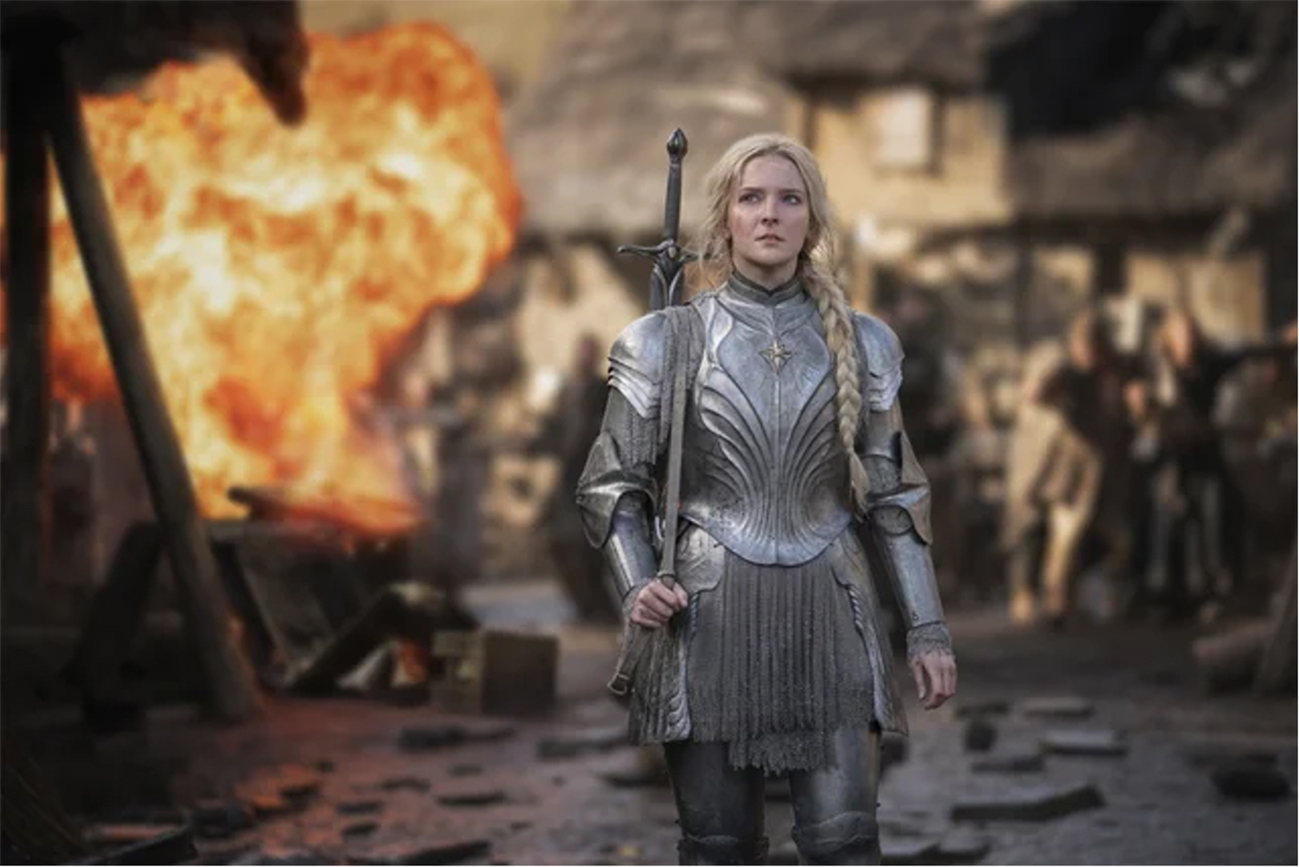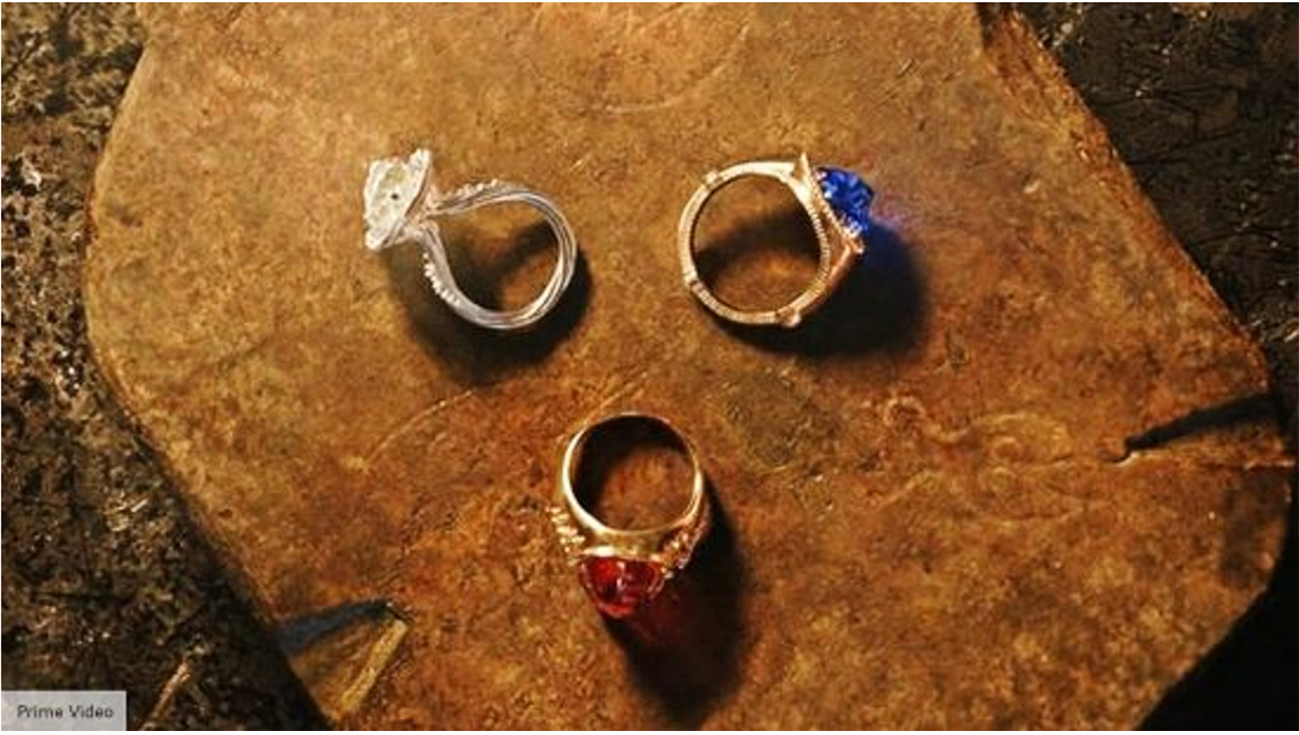One Ring to rule them all, One Ring to find them, One Ring to bring them all and in the darkness bind them.
Continuing our series of reviews on metal forming in film, we now delve into the Lord of the Rings universe. Previously, we explored sheet metal forming in 8 Mile and Star Wars: the Mandalorian. You may have noticed that nearly every exciting use of metal in cinema involves a magical object, sword, or bulletproof robot. In today’s post, we will turn our gaze to a “magical ring of power.” Fortunately, many of our readers are sci-fi and fantasy lovers!
Let’s dive into Amazon’s The Lord of the Rings: The Rings of Power series and analyze a weighty one-liner that played a crucial role in the forging of the rings. Is there any actual material forming involved in the process, or does the forging of the rings of power have no connection to material science whatsoever?
You may want to leave your critical thinking behind to enter:
In the Second Age of Middle-earth: the Age of Númenor
Amazon’s highly anticipated series The Lord of the Rings: The Rings of Power has garnered mixed reviews. The Guardian hailed it as “so astounding it makes House of the Dragon look amateur,” while Forbes labeled it as “Amazon’s arrogant betrayal of The Lord of the Rings.” The Review Geek criticized its marketing campaign, calling it one of the most tonally conflicting and disastrous in recent memory.
At an eye-watering cost of $89 million per episode (The Mandalorian cost just $15 million), The Rings of Power takes place 5,000 years before the events of the Lord of the Rings films. The story is set during the Second Age of Middle-earth, which comes to an end with Sauron’s downfall, a closely described event in the opening monologue of The Fellowship of the Ring by Cate Blanchett’s Galadriel.
[Warning: spoilers ahead!]
Season 1 Trailer:
The first season trailer introduces the main character Galadriel, who is possessed with only one goal in mind: to hunt down Sauron and prevent darkness from spreading across Middle-earth. However, other Elves believe that the war against Morgoth’s forces of evil is over. Galadriel, considered obsessive and a war veteran who will not let go, never stops believing that Sauron is out there somewhere.

Morfydd Clark (Galadriel). Credit: Matt Grace, Amazon Prime Video
Galadriel’s story takes us back to the forging of the first ring of power, where we first raise the question of material science. While her story is just one of five plots in the series, season one feels like it belongs to her. Many people have criticized Morfydd Clark’s portrayal of Galadriel, calling her bland, spoilt, and pouty. While I agree with some of these criticisms, it’s important to remember that in Tolkien’s books, Galadriel is an imperialist seeking to expand her kingdom out West and find new lands to rule. Personally, I think Clark’s portrayal is true to the character.
“Mithril” Metal is Sacred to Tolkien’s Universe
A second story line running through the series is the discovery of a powerful metal made by the dwarves in the mines of Moria (The Black Chasm). The metal is called Mithril, which the dwarves have dubbed “true silver.” But unlike our version of silver, this mighty metal never tarnishes.
Eventually, the Dwarves delved too deeply into the darkness beneath their mines. In the Third Age, they inadvertently awakened a hibernating Balrog that had eluded the battles of the First Age. His reawakening resulted in the downfall of the Dwarven kingdom, bringing the mining of Mithril to a halt and rendering the metal invaluable. The Balrog, Durin’s Bane, ruled over Moria for 500 years.
But we’re getting ahead of ourselves. In the context of The Rings of Power, Mithril has only recently been discovered and the Dwarves and Elves are still conducting feasibility studies…
That Metal Can Save the Elves
The situation is looking dire for the Elves in The Rings of Power. As Middle-earth’s Tree of Valinor dies, the Elves are gradually fading away. Valinor, known as the “Undying Lands”, is the original homeland of the Elves. According to the series lore, each Elf carries part of the sunshine of Valinor within them. Episode seven reveals the recent discovery of Mithril, a new mineral that can reverse the fading of the Elves. This is illustrated in a visually stunning scene where the Dwarven prince Durin witnesses Mithril’s ability to cure the blight affecting an Elven leaf.
Unfortunately, the Elves do not have enough Mithril to heal their tree, as they only have a solitary nugget in their possession.
Forging the Rings of Power
The greatest of all Elven craftsmen and a legend in the Tolkien universe, Lord Celebrimbor is struggling to find a solution. A blacksmith named Halbrand, awed in the presence of Celebrimbor’s legendary workshop, asks, “What are you building?” Celebrimbor replies, “I wanted to make a little something, but I don’t have enough of anything.” Halbrand now drops his theory:
“Forgive me, but at the risk of sounding a fool, couldn’t the right alloy also amplify those qualities?”
Celebrimbor: “Er… amplify?”
“Where I came up, precious metals were scarce as hens’ teeth, so we learnt to combine them to harness strengths and hide flaws. I’ve seen a trace of nickel added to iron to make a blade lighter and stronger. Might there not be some alloy to amplify the qualities of your ore?”

Credit: Amazon Prime Video
Halbrand takes it a step further, suggesting the resulting alloy could become a power that rules over flesh…
The final episode of season one is therefore aptly titled “Alloyed.”
Can You “Amplify” the Quality of Materials and Hide the Flaws?
Halbrand suggests two main benefits of alloying: amplifying qualities and hiding flaws. Although this may not sound scientific, alloying is indeed used to hide material defects. Raw metals are often soft or brittle, making them unsuitable for fabrication. By mixing them, the desirable properties of multiple materials can be harnessed in one alloy.
For example, adding non-metallic carbon to iron creates steel, while adding chromium to iron makes stainless steel that is resistant to corrosion. Adding nickel to iron increases formability and assists in corrosion resistance. This leads us to the concept of “hiding flaws” since alloying brittle material in this way overcomes the problem.
A recent white paper on how imperfections can actually improve alloys comes to mind, published under the title “Design metastability in high-entropy alloys by tailoring unstable fault energies” from the University of Pittsburgh Swanson School of Engineering. Wei Xiong led the study, stating, “Our work is showing how we can include intentional flaws in an alloy to make it stronger while retaining the ductility, or flexibility, of the material.”
The researchers propose that innovative design features can overcome the well-known trade-off between strength and ductility through transformation-induced plasticity (TRIP) and twinning-induced plasticity (TWIP). By utilizing changes in the microstructure that occur under pressure, purposeful defects are formed that improve the material’s strength, ultimately overcoming any inherent defects. According to lead author Xin Wang, “We want to understand the unstable microstructure so we can predict the instability, and then we can use the defects to further increase strength and elongation. The resulting material is then self-strengthening — deform it, and it actually gets stronger.”
With space exploration projects on the rise and the announcement of an impending moon-based space station, studies like these remind us that once-magical concepts are becoming reality!
As for The Lord of the Rings: The Rings of Power series, we give it a solid nine out of ten. Do you agree with our rating? We’ll have to continue watching the series to see how the other rings are forged.
Stay tuned for more metal forming film and tv reviews!
With special thanks to our AutoForm material experts Mouhcine Kahziz & Andrew Walker.













